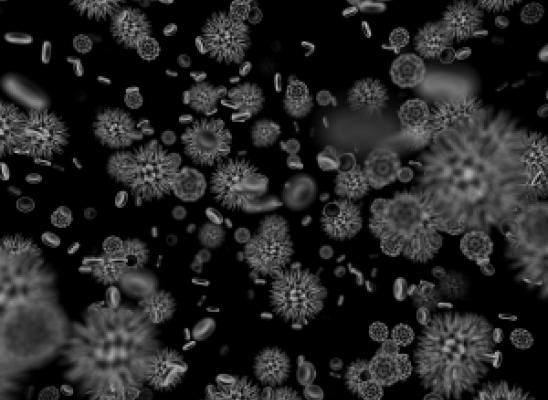Breaking the Stigma of Trichotillomania

Online test
Find out the severity of your symptoms with this free online test
Trichotillomania, often referred to simply as "trich" or hair pulling disorder is a complex psychological disorder characterized by repetitive hair pulling resulting in noticeable loss of hair, significant emotional distress, and impaired psychosocial functioning. While trich affects millions of people worldwide, it is an often misunderstood and stigmatized disorder, adding an additional layer of challenge for those living with the condition.
Despite progress that’s been made in acceptance, mental health issues still carry considerable stigma and negative attitudes from others. Being judged is a very real fear that keeps many people living with a mental health disorder from seeking help and support. If you’re living with a mental health disorder like hair pulling, you may have felt judged or misunderstood by others, even those closest to you. Maybe you’ve even judged yourself a bit harshly.
Is there anything you can do to help address the stigma and misconceptions about hair pulling and other body focused repetitive behaviors (BFRBs)? In this article, we delve into the roots of this stigma and explore strategies for confronting and challenging misconceptions about trich.
It’s More Than Just Hair Loss
Unlike some mental health issues, the primary symptom of trich, the loss of hair, is visible. It’s not easily camouflaged and can be the source of attention from others. Trich is much more than just the act of pulling one’s hair and its resulting hair loss. The behavior also holds meaning. Hair holds deep cultural, social, personal, and even religious meaning, even if we sometimes don’t recognize it. The loss of one’s hair can create significant emotional distress and carries meaning far beyond the loss itself.
People with trich often struggle with feelings of low self-esteem, guilt, and shame related to their hair pulling. They report feeling self-conscious or even disgusted by their behavior and the loss of hair. They may go to great lengths to conceal their hair loss, resorting to wearing hats, wigs, or makeup to camouflage the results of pulling.
And they worry about how others will perceive them. As a result, they often suffer in silence and are reluctant to seek help or reveal their struggles to others.
Stigma continues to surround mental health and can be one of the more difficult aspects to deal with. The stigma surrounding trichotillomania stems from misconceptions and ignorance about the disorder. People with trich tend to be viewed more negatively. Some may perceive hair pulling as a voluntary behavior (“just stop”) or a sign of poor hygiene, rather than recognizing it as a manifestation of a complex psychological condition. Trich also carries stigma and shame for the person living with it, struggling to understand just why they can’t stop pulling.
Stigma and shame both arise from social fear and the need for acceptance. They are essentially two sides of the same coin. Stigma arises from external fear associated with someone or something that is different. Shame arises from an internal fear of being judged or excluded or not worthy of acceptance. It can convince you that you are not worthy of help or compassion.
Stigma isn’t based on facts, but rather on how something fits or doesn’t fit within social norms. Mental health has been especially burdened with stigma over the centuries. Because mental health issues are often not easy to recognize, their associated behaviors don’t “fit”, leaving room for fear to take over. Despite the advances in mental health awareness, stigma still lurks. Talking about it can be scary and even frowned upon in some families and communities. Seeking help can be seen as a weakness or a reflection on the family.
Shedding light on the truth about mental health and trich can create awareness and challenge the negative impacts of stigma. Confronting the shame can open the door to healing.
Confronting Misconceptions with Compassion
There is no one best way to challenge the stigma associated with trich. At the heart of challenging the stigma and misconceptions about trich is education. Education is key to dispelling misconceptions and fostering empathy towards those affected by the disorder. By raising awareness about trich, we can help cultivate a more informed and supportive community.
Know the Facts
The first step in dispelling a myth is to know the facts. People not familiar with trich may not understand it. Even people living with trich don’t always understand their disorder. It's essential to recognize that trich is not a choice and not just a “bad habit”.
Start A Conversation
Whether it’s with family and friends, or a broader audience such as a blog or on social media or an online forum, start a conversation about trich. When you share your story, you are educating someone, and you may just be helping to empower someone who is silently walking the path with you.
Build A Supportive Community
A supportive community is paramount in challenging stigma and promoting recovery. Support groups, whether online and in-person, provide a safe space for people living with trich to share their experiences, seek advice, and receive validation from others who understand their struggles. Peer support can be invaluable in reducing feelings of isolation and building resilience.
Your family and friends can be an important part of your support community too. Invite them to have conversations with you about your experience. Normalize talking about mental health and how to do so with care and compassion. Sometimes people don’t know if asking questions or using certain words is helpful or hurtful. Having an open dialogue can lead to greater understanding and foster acceptance while dispelling myths and reducing the fear of judgment or stigma. It’s also a great opportunity to teach others about the importance of using positive, affirming language.
Promote Self-Acceptance and Resilience
Part of challenging stigma is learning to honor and care for yourself. Extending care and compassion to yourself can challenge the shame and boost your confidence and self-esteem. Self-care practices, such as mindfulness, relaxation techniques, and positive affirmations, can help you cope with urges to pull and manage stress (a trigger for many people) more effectively. Caring for yourself is also a great reminder that you are indeed worthy of kindness, care, and compassion.
Normalize Seeking Help
Just as you’d seek treatment from a healthcare provider for a medical issue, therapy is quite often the first-line treatment for most mental health issues, including trich. Therapy, particularly cognitive-behavioral therapy (CBT), is a cornerstone of treatment for trich and other body-focused repetitive behaviors (BFRBs). Therapy can help you identify triggers, develop coping strategies, and challenge negative thought patterns. When you’re equipped with tools to effectively manage your symptoms, you can confidently navigate the challenges of living with trich.
Everyone Can Help
Compassion, understanding, and education are our most potent allies in confronting the stigma surrounding trich. By challenging misconceptions and promoting positive practices, we can create a safe, supportive space where people living with trich feel understood, accepted, and empowered to seek help and support. Whether you’re living with trich, love someone living with trich, or support mental health advocacy, everyone can make a difference.
References
1. Corrigan, P. W., Druss, B. G., & Perlick, D. A. (2014). The impact of mental illness stigma on seeking and participating in mental health care. Psychological Science in the Public Interest, 15(2), 37-70. https://journals.sagepub.com/doi/10.1177/1529100614531398
2. Houghton, D. C., McFarland, C. S., Franklin, M. E., Twohig, M. P., Compton, S. N., Neal-Barnett, A. M., Saunders, S. M., & Woods, D. W. (2016). DSM-5 Trichotillomania: Perception of Adults With Trichotillomania After Psychosocial Treatment. Psychiatry, 79(2), 164–169. https://www.ncbi.nlm.nih.gov/pmc/articles/PMC5117460/
3. Mackay, C. (2023, June 20). Trichotillomania - emerging from under the cloak of shame — Department of psychiatry. Retrieved from https://www.psych.ox.ac.uk/news/trichotillomania-emerging-from-under-the-cloak-of-shame
4. Allen, R. (2022, February 21). Rare and misunderstood: UN-masking trichotillomania. Retrieved from https://www.supportiv.com/identity/shame-when-masking-your-struggle-isnt-possible
Online test
Find out the severity of your symptoms with this free online test
Start your journey with TrichStop
Take control of your life and find freedom from hair pulling through professional therapy and evidence-based behavioral techniques.
Start Now



